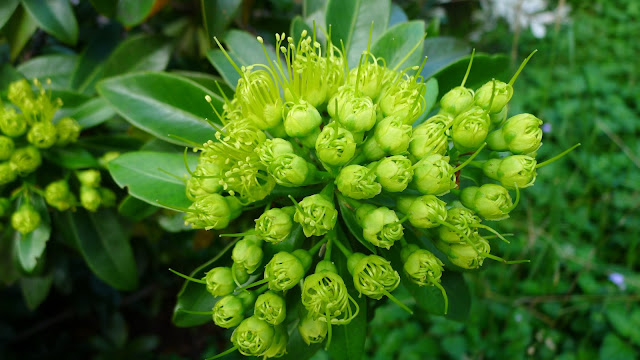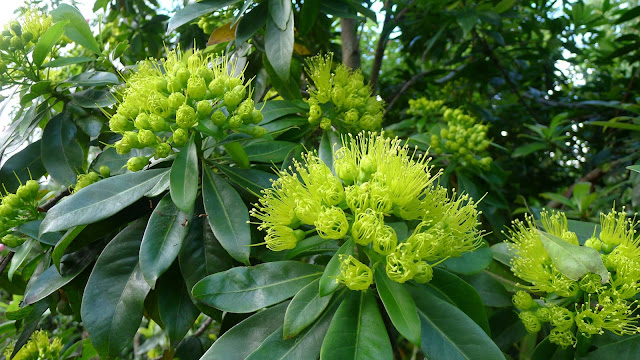Just living is not enough... one must have sunshine, freedom, and a little flower.
~Hans Christian Andersen
One of the most beautiful quotes; so simple so true; not only for butterflies!
Tibouchina semidecandra flowers on and off, prune from time to time if it is getting lanky.
Tillandsia is a genus of around 540 species in the Bromeliad family (Bromeliaceae), found in the forests, mountains, and deserts, of Central and South America, and Mexico and the southern United States in North America.
The thinner-leafed varieties grow in rainy areas and the thick-leafed varieties in areas more subject to drought. Moisture and nutrients are gathered from the air (dust, decaying leaves and insect matter) through structures on the leaves called trichomes.
Tillandsia species are epiphytes (also called aerophytes or air plants) – i.e. they normally grow without soil while attached to other plants. Epiphytes are not parasitic, depending on the host only for support.
Although not normally cultivated for their flowers, some Tillandsia will bloom on a regular basis. In addition, it is quite common for some species to take on a different leaf colour (usually changing from green to red) when about to flower. This is an indication that the plant is monocarpic (flowers once before dying) but offsets around the flowering plant will continue to thrive.
Golden Penda; Xanthostemon chrysanthus
has a splendid year, first dry then wet, one can see these splendid native trees or shrubs flowering everywhere.
The flowerheads, or racemes, are terminal or axillary and measure up to 15 cm in diameter. They are made up of numerous small (1–2 cm diameter) individual golden flowers. Flowering is followed by small (1-1,5 cm) green or brown woody capsules which are ripe between August and February. Flowers can appear at any time of year.
The range is from Cardwell northwards into Cape York Peninsula in Far North Queensland. It grows in open forest or rainforest, often along the banks or creeks and rivers
Tibouchina gigantea.
A garden teaches you to look and see; patience to wait for those elusive seedlings to appear, but mostly happiness when a flower slowly unfurls its petals to reveal its beauty. Titania

A garden teaches you to look and see; patience to wait for those elusive seedlings to appear, but mostly happiness when a flower slowly unfurls its petals to reveal its beauty. Titania

Mini Daylily, has a comeback after a very dry spring.
Favourites, lace fungi on a old log.
Mandarines are getting ready for winter, these will be early.
Always a pleasure to see the return of these simple Miltonia orchids, I say simple because they do not ask for attention or pampering.
A lot of rain in March;
Philodendron, shine!
The very pleasing and beautiful native Cats whiskers, I like this name I won't bother with the Latin one.
I like to grow many plants for many reasons but the best reason is in the joy of growing them. Titania
Flower, Vriesia species.
Tropical Salvia, Salvia guaranitica Costa Rica, after the rain it went into over drive!
There can be no other occupation like gardening in which, if you were to creep up behind someone at their work, you would find them smiling. ~Mirabel Osler
Bromeliad society had an Exhibition at the shopping centre, how could I get passed those without taking a few home?
This one jumped into my trolley on its own.
A new Bromeliad, the pleasure of waiting to see its flower.
♥
I used to visit and revisit it a dozen times a day, and stand in deep contemplation over my vegetable progeny with a love that nobody could share or conceive of who had never taken part in the process of creation. It was one of the most bewitching sights in the world to observe a hill of beans thrusting aside the soil, or a rose of early peas just peeping forth sufficiently to trace a line of delicate green. ~Nathaniel Hawthorne, Mosses from and Old Manse
















